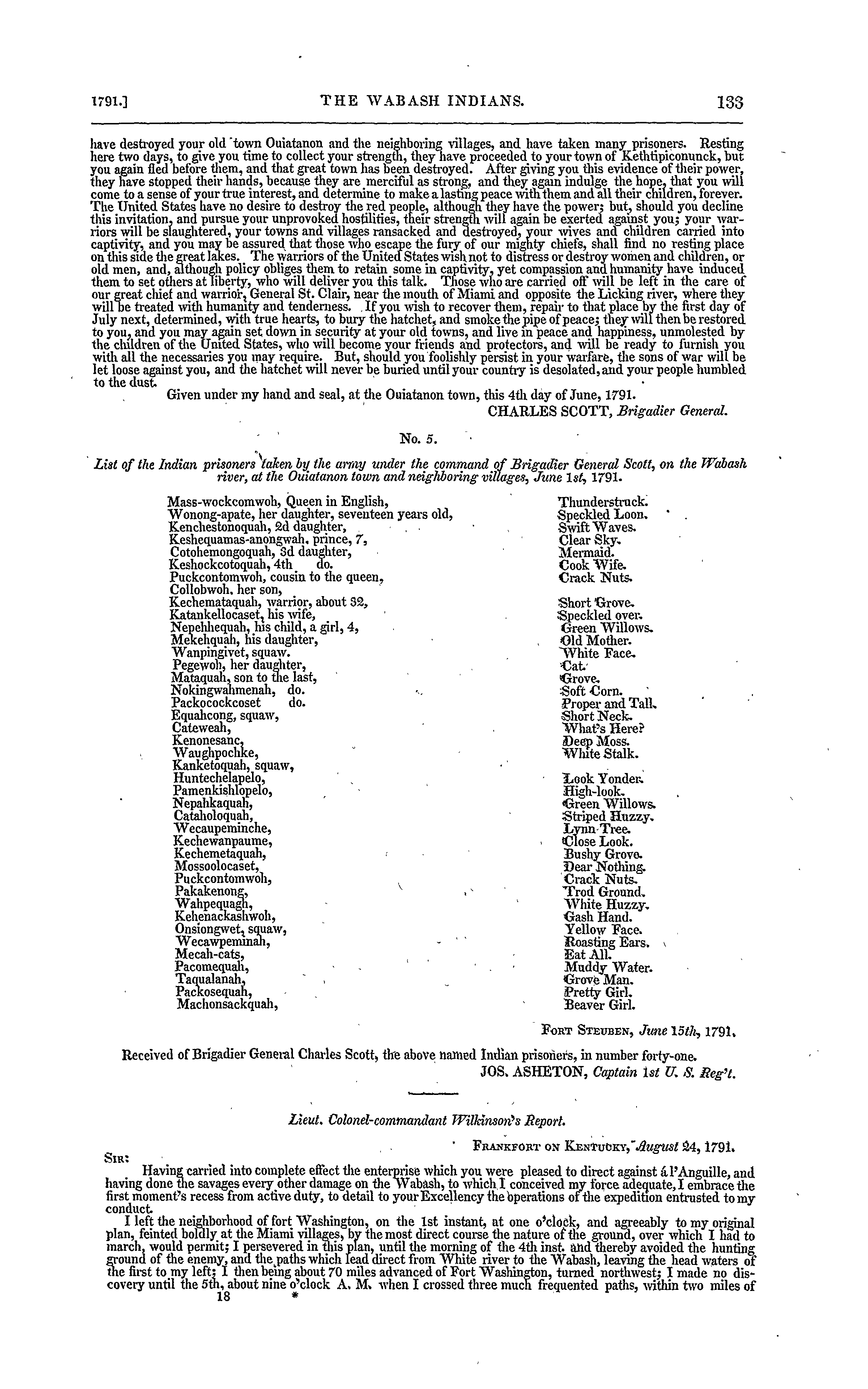List of Prisoners
“List of the Indian prisoners taken by the army under the command of Brigadier General Scott, on the Wabash river, at the Ouitanon town and neighboring villages, June 1st, 1791,” June 15, 1791, A Century of Lawmaking for a New Nation: U.S. Congressional Documents and Debates, 1774-1875. Library of Congress.
Background
When the Revolutionary War ended in 1783, the new U.S. government claimed control of an area of land they named the Northwest Territory. U.S. citizens immediately began to move into the territory, many of them settling in and around the Ohio River Valley. But the Indigenous communities living there refused to accept the U.S. claims to the land. Many nations* formed a coalition to oppose the settlers. They fiercely fought to defend their lands in a conflict that historians now call the Ohio War. In 1790, the Indigenous coalition defeated the U.S. Army in a major battle.
U.S. President George Washington was furious that the Native American nations of the Ohio River Valley refused to submit to U.S. demands. He instructed his generals to use the same tactics the Americans had used against the Haudenosaunee during the American Revolution. In 1791, a local militia made up of settlers invaded the lands defended by the Indigenous coalition. They burned every town they encountered and kidnapped many women and children. But the tactics that had worked so well against the Haudenosaunee in upstate New York were a complete failure in the Ohio River Valley. By 1792, the United States signed a new treaty with the Ohio River Valley tribes as a way to buy time and regroup.
About the Document
This document lists 41 of the Indigenous women and children captured by the United States during the 1791 raids in the Ohio River Valley. The Indigenous women of the Ohio River Valley were responsible for the agricultural work that fed their communities. President George Washington hoped their capture would disrupt the food supply of the resistant Indigenous nations. Washington believed they would be forced to surrender when their food supply ran out.
Washington’s captives were held for over a year before they were returned to their communities during treaty negotiations in 1792. But the women found ways to weaken their captors. For example, historians believe that the names on this list are fake. By giving their captors fake names, the women protected their own identities and prevented the U.S. government from identifying their families and communities for further attacks.
* Miamis, Shawnees, Delawares (Lenni Lenapes), Wyandottes, Potawatomis, and Ottawas among others.
Vocabulary
- coalition: Temporary alliance.
- militia: Volunteer army.
- Northwest Territory: The first incorporated territory of the United States. It was formed from lands that now make up the states Ohio, Indiana, Illinois, Michigan, Wisconsin, and Minnesota.
Discussion Questions
- Why did the United States capture Indigenous women during their raids in the Northwest territory?
- Historians believe the names on this list are fake. What did the women choose as their fake names? What do these names reveal about life in the Ohio River Valley in the 1790s?
- What does this document reveal about President George Washington’s attitude towards Indigenous communities that resisted U.S. expansion?
Suggested Activities
- Include this document together with The Battle of Fort Dearborn in any lesson about the incorporation of the Northwest Territory.
- To better understand Washington’s plan, read Madam Sacho and Sullivan’s Army.
- To learn how this conflict was resolved, read Making Treaties.
- For a larger lesson about Indigenous experiences and early U.S. expansion, combine this resource with any of the following: Making Treaties, Propagating “American” Womanhood, Seminole Wars, The Battle of Fort Dearborn, Life Story: Sacagawea, and Life Story: Harriet R. Gold Boudinot.
Themes
POWER AND POLITICS







